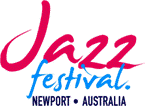It is with great pleasure (and some relief) to be able to report that the Wangaratta Festival was clearly an overall success (particularly in terms of both attendance figures and musical standards), and its immediate future is assured.
At the time of the announcement that Adrian Jackson would not be re-appointed as Artistic Director, I made the point that in addition to a change in A.D., the Board also needed to hit the “reset” button and make some real improvements to the event (such as securing more corporate sponsorship). They delivered on several changes, with major ones such as moving the Blues tent to Merriwa Park, and the free Community Stage to Ford Street (outside St. Pat’s Hall). This bought all the venues within easy walking distance of each other, and created a much greater sense of “festival”, with stalls offering several boutique beers on tap and a good variety of reasonably-priced food. Less-major improvements (such as providing a stage riser for the Cathedral performances) made significant impact too (because most of the audience could now easily see the performer).
For the programming team, there was a well-established template to follow after 27 festivals. However, the choice of New Orleans trumpeter Christian Scott’s quintet as the headliner was an inspired idea (and one that was probably only made possible by an increased budget from recent years). While some reviewers complained about his volume (and some use of electronics), he was a great communicator on the microphone, and won over many fans. His “stretch music”, with the electronics and rhythms, had contemporary elements to appeal to younger fans (something that the Festival vitally needs more of). Scott is a virtuosic trumpeter who certainly gave his all in his solos, and took risks, as did the stimulating alto saxophonist Logan Richardson. Most importantly, the band always swung, powered by the dynamic drumming of Corey Fonville.
Tellingly, the other main highlight for me was the suite of new works by Sydney trumpeter Phil Slater (whose quintet included two of his long-term collaborators, pianist Matt McMahon, and drummer Simon Barker). This was predominantly quite notated music (with improvisation) that covered a gamut of often subtle feelings; sometimes very meditative, and sometimes featuring unaccompanied trumpet. Slater is a virtuosic trumpeter, but he keeps his technique always at the service of the music. When the arc of the music eventually builds to the ‘slow burn’, he then uses his technique to stoke real fire and genuine hairs-on-the-back of your-neck excitement. This was outstanding Australian jazz-based music, and I would love to have a record of it.
My wife commented after hearing this, Finland’s Kari Ikonen Trio and the Scott Quintet, that the Festival provided an invaluable platform to recognise the differences between Australian, European and American styles of jazz.
Expatriates pianist Aron Ottignon also reflected how being a semi-finalist in the National Jazz Piano Awards as a teenager had been such an important catalyst for his international career, and greatly inspired him (one of the Festival’s assets that we tend to under-value). Ottignon’s trio, Digital Seed, and Barney McAll’s ASIO were some of the groups that produced music with a more contemporary focus.
In the past I have pondered about the challenge of attracting more fans when costs such as accommodation are added to the ticket price. But when major ‘name’ artists such as James Morrison and Katie Noonan (whose concert tickets are generally expensive) are featured in a diverse program, it adds to real value in a relaxing atmosphere where you can focus solely on the music.
